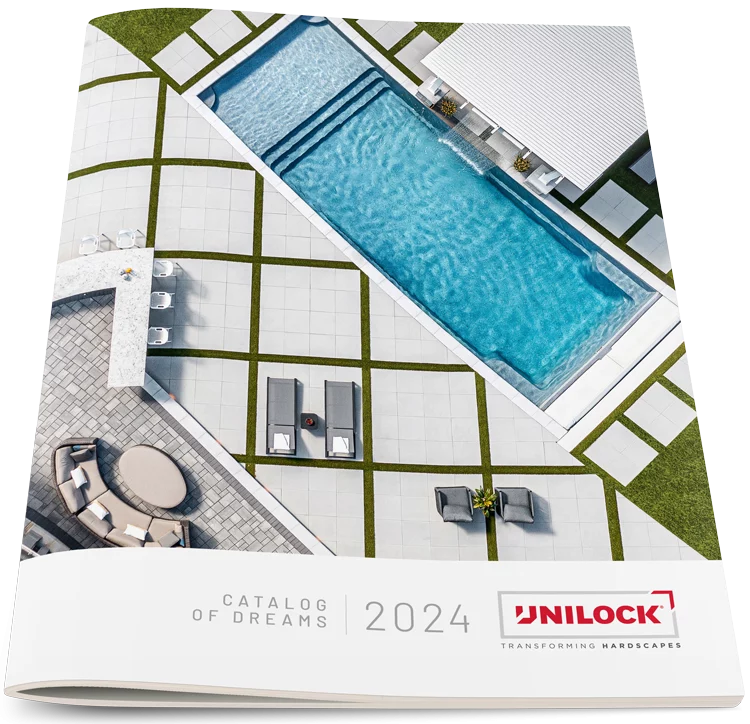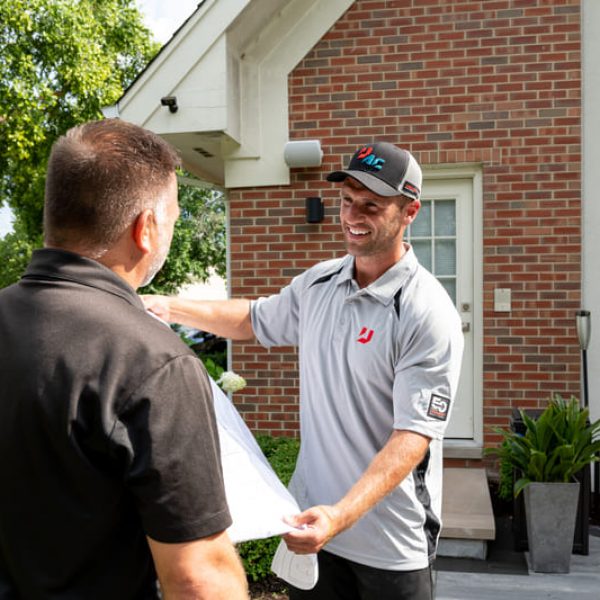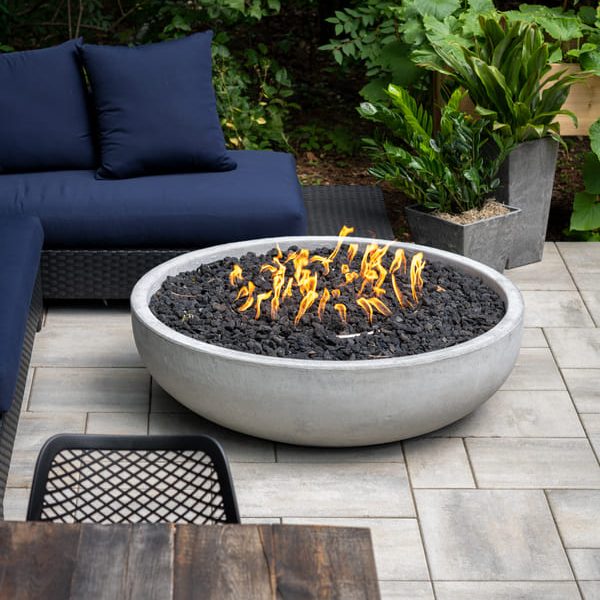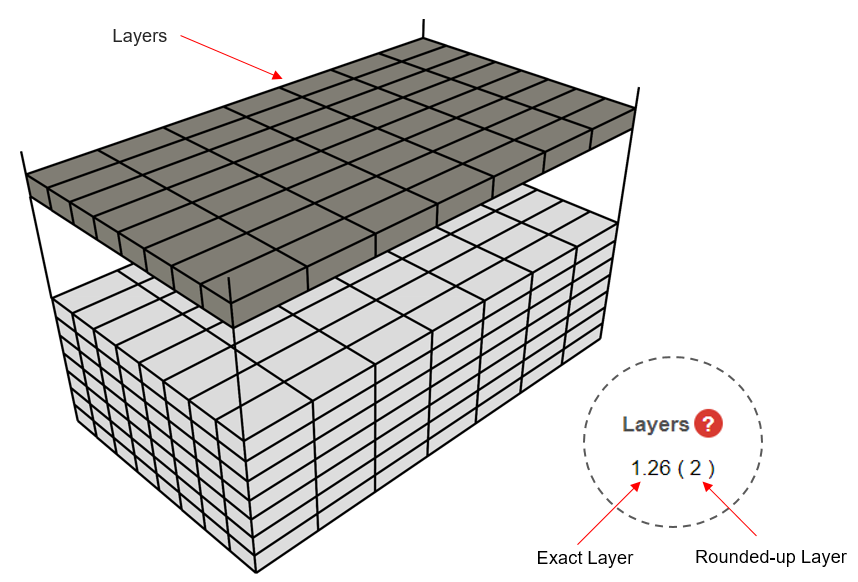与承包商合作 Autorisé Unilock 是与最优秀的人合作。 我们的 UAC 拥有知识和专业知识,可以将您的梦想项目变为现实,并提供超出您期望的令人惊叹的结果。
如何使用聚合物砂进行摊铺机接缝
Choosing the right paving stones for your patio, driveway, or walkway is a big decision. But there’s another important aspect to consider, and that is what will ultimately fill in the gaps between your pavers once they’re installed.
Polymeric sand and jointing sand might seem like small details, but they’re essential for completing your paver project. In this article, we’ll explore what polymeric sand is and its benefits, and walk you through the steps to installing it.
什么是聚合砂?
Polymeric sand is a mixture of coarse-grained sand, polymers, and binding agents which is swept into the joints dry and activated with water after the joints are filled. The paver surface must be swept clean before wetting the pavers to prevent hazing or staining. Trusted by landscaping professionals and contractors, polymeric sand plays a crucial role in securing patio pavers in place and deterring the growth of weeds between pavers.
The Benefits of Polymeric Sand vs. Regular Jointing Sand
Using polymeric sand requires precision and attention to detail to prevent excess sand from activating and hardening on the surface, which can be tricky to remove. But why choose polymeric sand over regular jointing sand?
A project finished with polymeric sand boasts greater strength and longevity compared to one using regular jointing sand. This resilience comes from the binding agent within the sand, ensuring it remains steadfast for years to come.
Unlike regular jointing sand, polymeric sand forms tight bonds with adjacent pavers, resisting erosion, even during heavy rainfall. This means you won’t have to worry about constantly replacing washed-away sand thanks to the binding agent, which is activated using water.
While weeds might still find their way between your pavers when using regular jointing sand, activated polymeric sand creates a nearly airtight seal, significantly reducing the risk of weed growth. Plus, it makes it harder for pests like ants to invade the crevices between your pavers.
Just like regular jointing sand, polymeric sand comes in various colors, allowing you to choose the perfect match for your patio pavers. So, you don’t have to sacrifice aesthetics to enjoy enhanced durability.
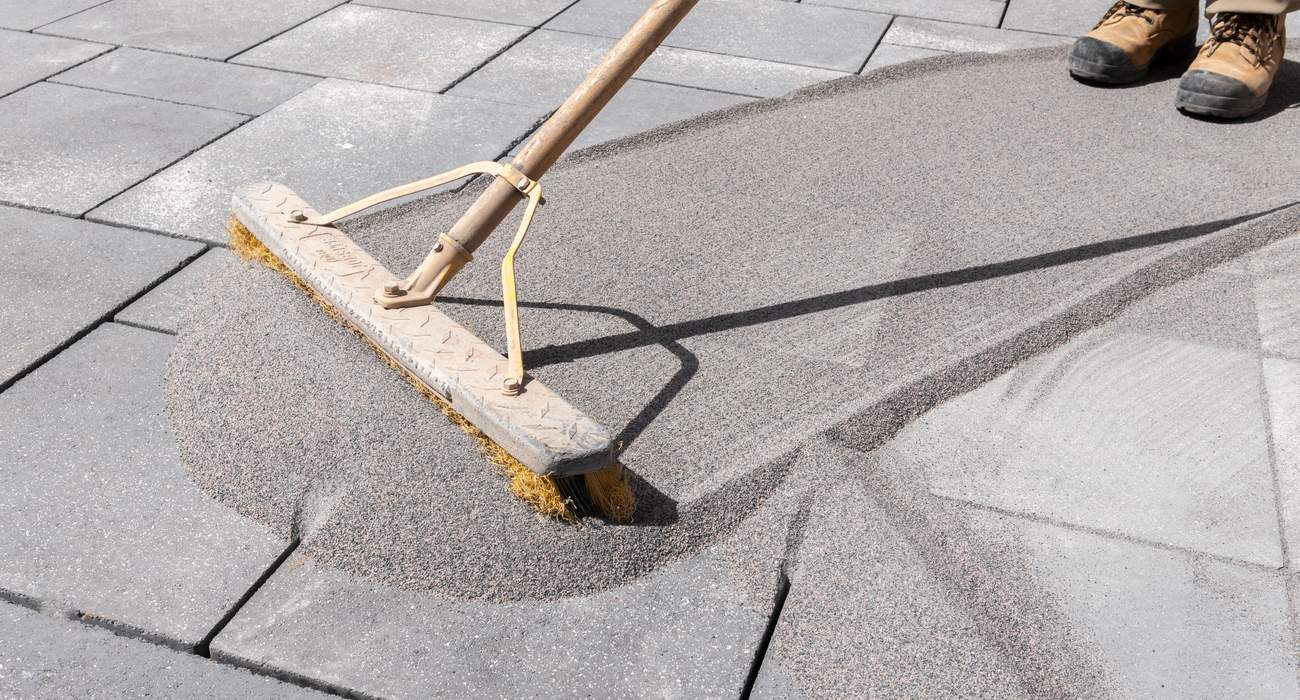
How to Install Polymeric Sand
After installing your pavers, the next step involves adding polymeric sand and compacting the pavers, which will help settle the sand between the joints. We recommend using polymeric sand that meets ASTM C144 or C33 specifications.
Carefully sweep the polymeric sand across the surface, ensuring that the gaps between your pavers are filled to roughly 1/8” below the rounded or beveled edge of each paver. Remove any excess sand from the surface using a soft bristle broom and/or a leaf blower before compacting the pavers to avoid scuffing.
Once the surface is fully compacted, lightly wet your pavers using a hose with a sprinkle head attachment. This step activates the binding agent of the polymeric sand, locking the pavers firmly in place.
How Many Years Does It Last?
The lifespan of polymeric sand can vary depending on the quality of the product, the installation process, and the environmental conditions it’s exposed to. Generally, when properly applied and maintained, polymeric sand can last for several years.
Alternatives To Polymeric Sand
Alternatively, you can still opt to use regular jointing sand to fill the gaps between your pavers. This type of sand is very common in hardscape projects, with its primary function being to fill the gaps between paver joints to secure them in place. This sand variant consists of medium coarse-grained silica and is generally perceived as a cost-effective option when compared to polymeric sand. There are two ways to install regular joint sand. The first is on its own, and the second is in conjunction with a joint sand stabilizing sealer. The latter is preferred as it helps prevent joint sand washout and protects against weed growth and insect infestation.
Another type of sand is resin sand, which is a mixture of graded sands and resins that form a solid joint when exposed to air. This product can be installed either wet or dry, and while it does have some permeability, it should not be used for true permeable application.
When Should You Not Use Polymeric Sand?
When it comes to the choice between polymeric sand and regular jointing sand, we tend to recommend polymeric sand first as it ensures optimal stability and longevity, and requires less maintenance compared to regular jointing sand. However, polymeric sand is not ideal for heavily textured paving stones, such as Il Campo or Series, as the deep grooves in these stones can trap polymer particles. When wet, these particles may stick to the surface, creating a stubborn, hazy appearance that’s difficult to remove. In such cases, we recommend an alternative approach using regular jointing sand in conjunction with a joint sand 稳定密封剂. We recommend waiting a minimum of 3 months after installation before applying a sealer, to allow for the natural efflorescence to dissipate.
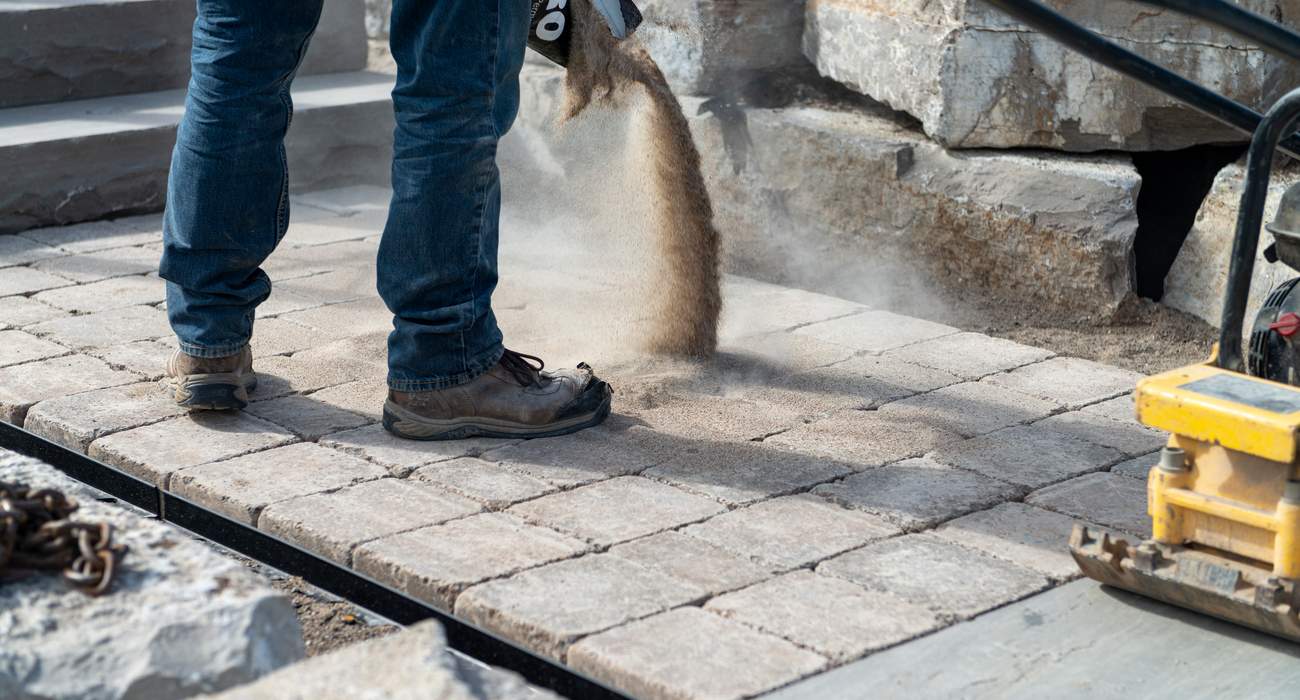
Polymeric Sand Vs. Regular Jointing Sand: Weighing the Pros And Cons
Let’s look at some of the pros and cons associated with using polymeric sand versus regular jointing sand between your pavers:
| 聚合砂 | Regular Jointing Sand |
| 优点:
耐用性: Polymeric sand is known for its exceptional durability. It forms a strong bond when activated with water, which helps lock pavers together and prevents them from shifting.
Weed Prevention: Polymeric sand contains additives that inhibit weed growth between pavers. This reduces the need for frequent weeding and maintenance.
Insect Resistance: The superior lock-up of polymeric sand makes it less attractive to insects like ants, reducing the likelihood of ant infestations under the pavers.
Reduced Erosion: Polymeric sand is less susceptible to erosion caused by heavy rain or water runoff due to the special additives that help bind the pavers in place, ensuring a stable paver installation over time.
| 优点:
Repairs are easier: it is easier to make repairs to the paved area if necessary because the pavers do not stick together making them easier to pull up and when you put them back in, ordinary joint sand will blend in easier color-wise.
|
| 缺点:
费用: Polymeric sand is typically more expensive when compared to regular jointing sand, which may contribute to the overall project cost.
复杂的安装过程: Installing polymeric sand demands meticulous attention to detail, including thorough compaction and ensuring a completely dry surface before introducing water. Keeping a watchful eye on the weather is extremely important to make sure that the pavers are kept dry before the application of polymeric sand. This level of precision may pose challenges for inexperienced DIY enthusiasts. Therefore, opting for polymeric sand installation is often better suited to seasoned professionals, such as 承包商Autorisé Unilocks.
Not Ideal for Textured Pavers: Polymeric sand is not recommended for heavily textured paving stones, like Il Campo or Series, as the deep grooves in these stones can trap polymer particles. When wet, these particles may stick to the surface, creating a stubborn, hazy appearance that’s difficult to remove. In such cases, we recommend an alternative approach using regular jointing sand in conjunction with a joint sand 稳定密封剂. | 缺点:
有限的耐用性: Regular jointing sand, unless accompanied by a joint stabilizing sealer, lacks the bonding properties of polymeric sand, making it less effective at preventing joint sand washout and weed growth.
Prone to Weeds: Weeds and grass can easily grow between the joints, leading to a less aesthetically pleasing surface that requires regular maintenance.
侵蚀: Regular jointing sand is more prone to erosion, which can result in uneven paver surfaces and the need for frequent reapplication of joint sand over time.
Prone to Insect Infestation: Regular jointing sand’s loose nature allows ants to pass through the joints easily, potentially resulting in the formation of ant hills or mounds on the surface.
|
Why Choose Polymeric Sand For Paver Jointing
If you’re willing to invest in longevity and ease of maintenance, polymeric sand is truly the best choice. Polymeric sand provides long-lasting stability and is less susceptible to erosion caused by heavy rainfall or water runoff, while also providing superior lock-up that inhibits weed and insect infestations.
If you require advice or expert support, don’t hesitate to contact a trusted Contracteur Autorisé Unilock. Their knowledge and experience will pave the way to a successful polymeric sand application.
相关
刊文

